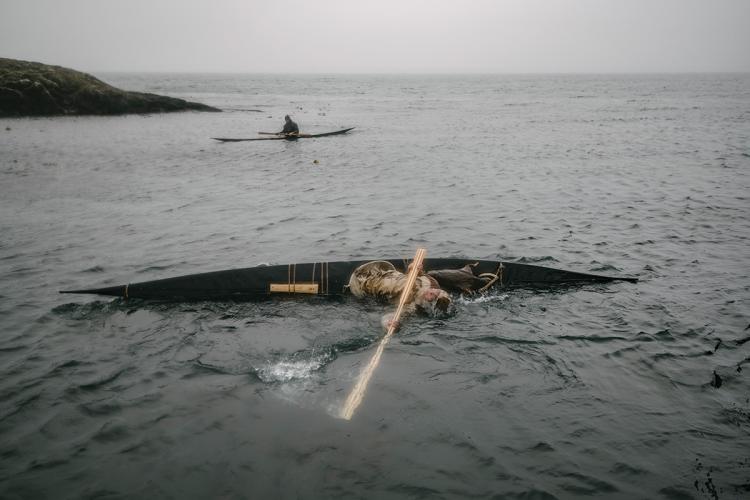Kiliii Yüyan, who is of Nanai/Hezhe (Indigenous Siberian) and Chinese descent, had been a traditional kayak builder in the Pacific Northwest for 20 years before he decided to capture images for a profession. While in Alaska learning how to sew seal-skin boats, he started photographing the Indigenous people he encountered. A fellow photographer encouraged Yüyan to show his Alaska images to National Geographic, which published them in 2015. Yüyan is now documenting Indigenous cultures all over the world. Home in Seattle only a few days a year, he said, “I’ve been a nomad most of my life.” Photographing scenes in remote locations is “magical,” he said. “You can’t predict it. It is untamed. You just have to be there.”
In 2018, Yüyan witnessed the annual kayaking championships hosted by Qaannat Kattuffiat, the Greenland Kayaking Association. As they are quiet, kayaks have been the traditional watercraft for seal hunting in Greenland inlets, where the water is often calmer than on the open ocean and harpooned seals can be more easily towed to shore. Unlike modern kayaks, traditional Inuit kayaks of Greenland (called “qajat”) are exceptionally thin and difficult to maneuver. Once tipped, a paddler’s arms or even entire body can be trapped beneath it in the icy water. Young kayakers are taught how to upright themselves within minutes according to the upended kayaker’s position in the water. More than 30 different types of rolls are judged in Qaannat Kattuffiat’s competition, which is open to any kayaker willing to try to master this life-saving skill.
In this image, Inuit competitor Kunuunnguaq Davidsen is about to right himself with a “Greenland roll. ”Yüyan said he enjoys documenting such scenes in Indigenous communities because “there are times you can open your eyes and look and it could be any point in history. ...It is timeless.”

